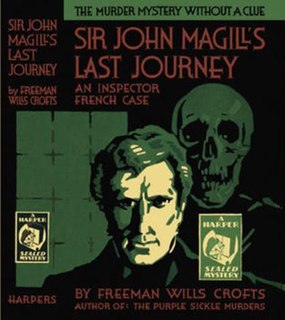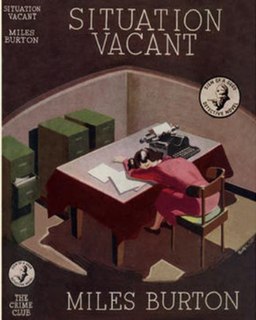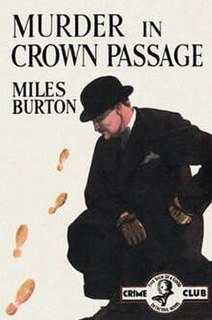
Alfred Edward Woodley Mason was an English author and politician. He is best remembered for his 1902 novel of courage and cowardice in wartime, The Four Feathers and is also known as the creator of Inspector Hanaud, a French detective who was an early template for Agatha Christie's famous Hercule Poirot.

The House of the Arrow is a 1924 mystery novel by the English novelist A. E. W. Mason, the third full-length novel featuring his recurring character Inspector Hanaud. It has inspired several films of the same title.
At the Villa Rose is a 1930 British mystery film directed by Leslie S. Hiscott and starring Norah Baring, Richard Cooper and Northern Irish Actor Austin Trevor. It marked Trevor's screen debut. It was released in the United States under the alternative title of Mystery at the Villa Rose.

At the Villa Rose, also known as House of Mystery, is a 1940 British detective film directed by Walter Summers and starring Kenneth Kent and Judy Kelly. It is based on the novel At the Villa Rose by A.E.W. Mason featuring the French detective Inspector Hanaud.

At the Villa Rose is a 1910 detective novel by the British writer A. E. W. Mason, the first to feature his character Inspector Hanaud. The story became Mason's most successful novel of his lifetime. It was adapted by him as a stage play in 1920, and was used as the basis for four film adaptions between 1920 and 1940.
At the Villa Rose is a 1920 British silent detective film based on the 1910 novel At the Villa Rose by British politician and author A.E.W. Mason. The feature was directed by Maurice Elvey and stars Manora Thew and Langhorn Burton. A print of the film survives at the British Film Institute archives.
The House of the Arrow is a 1930 British mystery film directed by Leslie S. Hiscott and starring Dennis Neilson-Terry, Benita Hume and Richard Cooper. It was based on the 1924 book The House of the Arrow, and its subsequent stage play adaptation by A.E.W. Mason, part of his Inspector Hanaud series. It was one of four film adaptations of the story. It was made at Twickenham Studios. A quota quickie, it was distributed by the American company Warner Brothers. A separate French-language version La Maison de la Fléche was also produced at Twickenham directed by Henri Fescourt.

The House in Lordship Lane is a 1946 British detective novel by A.E.W. Mason. It is the fifth and final full-length novel in Mason's Inspector Hanaud series, published when the author was eighty-one. Unlike the others in the series the story is largely set in England, the Lordship Lane of the title being a thoroughfare in East Dulwich, South London.
Inspector Gabriel Hanaud is a fictional French detective depicted in a series of five novels and one novella by the British writer A. E. W. Mason. He has been described as the "first major fiction police detective of the Twentieth Century".

The House of the Arrow is a 1953 British mystery film directed by Michael Anderson and starring Oskar Homolka, Robert Urquhart and Yvonne Furneaux. It is the fourth film version of the 1924 novel The House of the Arrow by A. E. W. Mason, featuring his French detective Inspector Hanaud.

Ursula Reilly Curtiss was an American writer of mystery novels.

The Affair at the Semiramis Hotel is a 1917 detective novella by the British writer A. E. W. Mason featuring his character Inspector Hanaud. Mason had originally written many of the plot elements for an abortive silent film, to be called The Carnival Ball. The novella appeared between Mason's first full-length Hanaud novel, At the Villa Rose (1910), and his second, The House of the Arrow (1934).

The House of Secrets is a 1926 mystery thriller novel by the British writer Sydney Horler. Horler was a prolific writer known for particularly for his series featuring Tiger Standish, but he also wrote many stand-alone novels. In 1927 he adapted the novel into a stage play of the same name.

The Curse of Doone is a 1928 mystery thriller novel by the British writer Sydney Horler. It also has element of horror about it. It was published in America in 1930 by The Mystery League.
Lynn Brock (1877-1943) was the pseudonym of the Irish writer Alister McAllister, who moved to England and wrote a series of mystery novels. Brock is best known for his series of Colonel Gore detective novels, which enjoyed popularity in the 1920s and 1930s during the Golden Age of Detective Fiction. His novels employ a complexity of style and are generally set in rural locations. He also wrote several plays under the name Anthony Wharton.

Sir John Magill’s Last Journey is a 1930 detective novel by the Irish writer Freeman Wills Crofts. It is the sixth in his series of novels featuring Inspector French, a prominent figure of the Golden Age of Detective Fiction. Much of the novel takes place in Northern Ireland, particularly around Belfast, where Crofts had spent a great deal of his younger years before moving to England. As with many of his puzzle mysteries its solution revolves around railway timetables as well as the possible distance a boat could cover in a certain time.

Murder at Lilac Cottage is a 1940 detective novel by John Rhode, the pen name of the British writer Cecil Street. It is the thirty third in his long-running series of novels featuring Lancelot Priestley, a Golden Age armchair detective. In the Times Literary Supplement reviewer Maurice Willson Disher noted "With both ingenuity and originality at command, he will keep puzzle-solvers guessing until it pleases Dr. Priestley to explain why clues are not what they seem." while Ralph Partridge gave it a broadly positive review in the New Statesman.

Beware Your Neighbour is a 1951 detective novel by the British writer Cecil Street, writing under the pen name of Miles Burton. It was part of a lengthy series of books featuring the detective Desmond Merrion and Inspector Arnold of Scotland Yard. Unlike much of the series it takes place in suburban rather than rural England. Reviewing the novel in The Spectator Esther Howard wrote " I always find that Mr. Burton has nearly the most colourless detectives, prose-style and plots of anyone in the business, and Beware Your Neighbour, death in an exclusive thoroughfare, though mechanically adequate, is entirely devoid of excitement."

Situation Vacant is a 1946 detective novel by the British writer Cecil Street, writing under the pen name of Miles Burton. It was the thirty fourth entry in a lengthy series of books featuring the detective Desmond Merrion and Inspector Arnold of Scotland Yard. As with much of the series it takes place in rural England.

Murder in Crown Passage is a 1937 detective novel by the British writer Cecil Street, writing under the pen name of Miles Burton. It is the sixteenth in a series of books featuring the amateur detective Desmond Merrion and Inspector Arnold of Scotland Yard. Street was one of the most prolific authors of the Golden Age of Detective Fiction. It was published in the United States by Doubleday the same year under the alternative title The Man with the Tattooed Face. As often in the series, the setting is in rural England.















